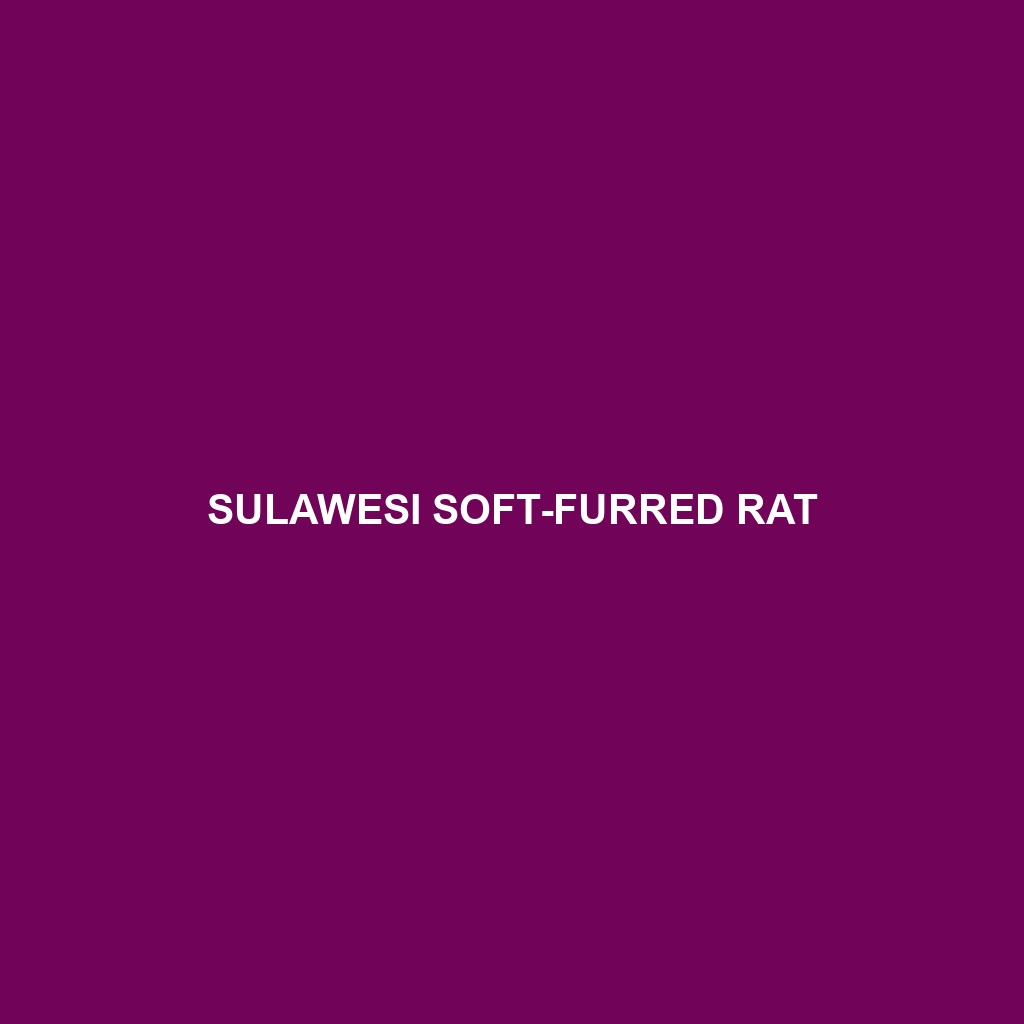West-central Sulawesi White-toothed Shrew
Common Name: West-central Sulawesi White-toothed Shrew
Scientific Name:
Habitat
The West-central Sulawesi White-toothed Shrew is primarily found in the lush, tropical forests of central Sulawesi, Indonesia. This species inhabits moist leaf litter and dense undergrowth, thriving in areas with rich biodiversity. The shrew prefers elevations ranging from 700 to 2,000 meters, where the microclimate supports a variety of flora and fauna.
Physical Characteristics
The West-central Sulawesi White-toothed Shrew exhibits a compact body with a length ranging from 10 to 15 cm, excluding the tail. Its fur is predominantly dark brown on the dorsal side, transitioning to a lighter, almost whitish color on the underbelly. This species is characterized by elongated snouts and sharp, white teeth, which are particularly notable when it forages for food. Its small, beady eyes and short limbs contribute to its unique appearance.
Behavior
West-central Sulawesi White-toothed Shrews are primarily nocturnal, exhibiting heightened activity during the night. These shrews are known for their agility and quick movements as they scurry through the forest floor in search of food. Territorial by nature, they communicate with each other through a series of vocalizations and scent markings to establish boundaries and attract mates.
Diet
The diet of the West-central Sulawesi White-toothed Shrew mainly consists of insects, earthworms, and other invertebrates. They are skilled hunters, using their keen sense of smell to locate prey hidden within the leaf litter. Additionally, they may consume some plant matter, including seeds and fruits, making them opportunistic feeders that contribute to the control of insect populations.
Reproduction
The breeding season for the West-central Sulawesi White-toothed Shrew typically occurs during the rainy months, when food is plentiful. Females give birth to litters ranging from 2 to 5 offspring after a gestation period of approximately 30 days. The young are weaned after a few weeks and begin to explore their surroundings, learning vital survival skills from their mothers before becoming fully independent.
Conservation Status
The West-central Sulawesi White-toothed Shrew is currently classified as vulnerable due to habitat loss from deforestation and agricultural expansion. Ongoing conservation efforts aim to protect its natural habitat and promote awareness of the threats faced by this unique species.
Interesting Facts
– The West-central Sulawesi White-toothed Shrew is one of the lesser-known species of shrew, making it a point of interest for researchers studying biodiversity in Sulawesi.
– This species has a unique ability to regulate its metabolism, allowing it to survive in environments with fluctuating food availability.
Role in Ecosystem
As a predator of insects and other small invertebrates, the West-central Sulawesi White-toothed Shrew plays a crucial role in maintaining the ecological balance within its habitat. By controlling pest populations, it contributes to the overall health of the forest ecosystem and supports biodiversity.

